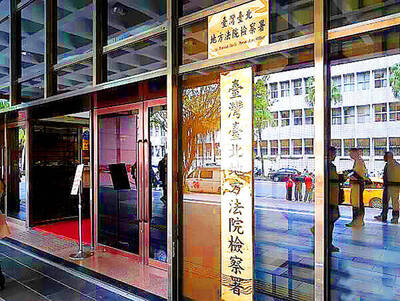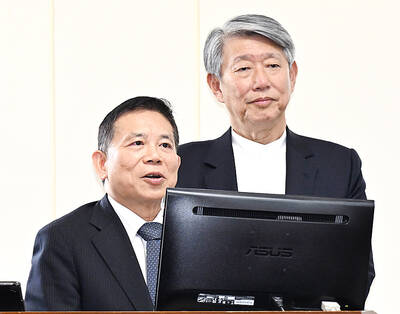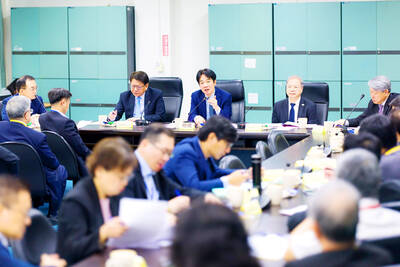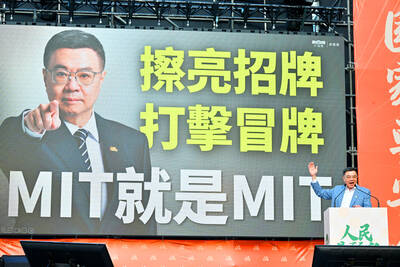A US congressional report released this week makes it clear that, without the acquisition of new aircraft, the Taiwanese air force risks being a shadow of itself by 2020 and incapable of meeting the challenge it faces in the Taiwan Strait.
The annual report by the Congressional Research Service, entitled Taiwan: Major US Arms Sales Since 1990 — which Defense News has called “required reading inside Taiwan defense circles and among US defense officials working with the island’s military” — provides a detailed analysis of US arms sales to Taiwan over more than two decades.
The section on F-16 jet sales provides the greatest shock. By 2020, it says, the number of fighter aircraft in the air force would drop by 70 percent without the acquisition of new F-16s as it retires near-obsolete F-5s and some ageing Mirage 2000s, whose spare parts are reportedly extremely costly.
Even if Taiwan were to acquire the 66 F-16C/Ds it has been requesting since 2006, the total number of aircraft would still have dropped by 50 percent by that time, the report says.
In numerous requests to the US over the years, Taiwan had made it clear that it understands the severity of the shortage it faces within the next decade and it has argued that it is seeking both upgrades for its 145 F-16A/Bs sold in 1992 and new aircraft.
In a letter of request submitted in November 2009, Taiwan wrote that the upgrade program would by necessity be “in parallel to, and not a substitute for, new F-16C/D” aircraft.
On a visit to the US in September last year, Vice Minister of National Defense Andrew Yang (楊念祖) called the F-16C/Ds and diesel-electric submarines — another program that has been stalled for several years — the most urgent systems for Taiwan to acquire, not the F-16A/B upgrades.
A notification to Congress in September last year included a US$5.2 billion upgrade package for the F-16A/Bs, but not the new F-16C/Ds. The Ministry of National Defense says the retrofits, which would be budgeted over a period of 12 years, would bring the F-16A/Bs’ capabilities to 80 percent of those of the F-16C/D, with some capabilities even surpassing the F-16C/D.
However, the package does not include new engines, meaning that their operational range would remain more limited than that of F-16C/Ds. The program also does not include airframe work, leaving unaddressed the problem of ageing aircraft that have now been in service for two decades.
According to Lockheed Martin, a retrofit would not start until 2017, after five years of preparatory work. Once it begins, it would take one squadron, or about 24 F-16A/Bs, out of service at a time over a period of five years.
Furthermore, the program would take three years longer than a program to sell the same number of 145 new F-16C/D fighters, which it says would take seven years.
During that same period, a number of Indigenous Defense Fighters (IDF) will also be out of service for mid-life upgrades, further compounding the quantitative crisis.
More recent events, which are not covered in the CRS report, seem to indicate that Taiwan is having second thoughts about running the two programs in parallel. Earlier this month, legislators and senior military officials said that the F-16A/B upgrades were more expensive than expected and that Taiwan might not have the financial resources to do both. Some also argued that rather than purchase the new F-16C/Ds, Taiwan should instead bid for Lockheed Martin’s F-35B, a problem-plagued aircraft that is still under development.
Such signaling has given rise to speculation in defense circles that Taiwan might want out of the F-16C/D project, at a time when the White House may finally be willing to make the aircraft available. A defense industry source told the Taipei Times yesterday that Taiwan’s National Security Council has been informed of the urgency of submitting a new letter of request for the F-16C/Ds to push the issue, but that such recommendations had “disappeared into a black hole.”
A strong indicator of a possible shift occurred on Thursday when President Ma Ying-jeou (馬英九) met former Florida governor Jeb Bush, who arrived the same day on a three-day visit.
Although some were expecting that Ma would restate Taiwan’s interest in acquiring the F-16C/Ds, the president only mentioned the upgrades, telling Bush he hoped the program would provide the F-16A/Bs with capabilities “close to” those of the F-16C/Ds.

INVESTIGATION: The case is the latest instance of a DPP figure being implicated in an espionage network accused of allegedly leaking information to Chinese intelligence Democratic Progressive Party (DPP) member Ho Jen-chieh (何仁傑) was detained and held incommunicado yesterday on suspicion of spying for China during his tenure as assistant to then-minister of foreign affairs Joseph Wu (吳釗燮). The Taipei District Prosecutors’ Office said Ho was implicated during its investigation into alleged spying activities by former Presidential Office consultant Wu Shang-yu (吳尚雨). Prosecutors said there is reason to believe Ho breached the National Security Act (國家安全法) by leaking classified Ministry of Foreign Affairs information to Chinese intelligence. Following interrogation, prosecutors petitioned the Taipei District Court to detain Ho, citing concerns over potential collusion or tampering of evidence. The

NEGOTIATIONS: Taiwan has good relations with Washington and the outlook for the negotiations looks promising, Minister of Economic Affairs J.W. Kuo said Taiwan’s GDP growth this year is expected to decrease by 0.43 to 1.61 percentage points due to the effects of US tariffs, National Development Council (NDC) Minister Paul Liu (劉鏡清) said at a meeting of the legislature’s Economics Committee in Taipei yesterday, citing a preliminary estimate by a private research institution. Taiwan’s economy would be significantly affected by the 32 percent “reciprocal” tariffs slapped by the US, which took effect yesterday, Liu said, adding that GDP growth could fall below 3 percent and potentially even dip below 2 percent to 1.53 percent this year. The council has commissioned another institution

NEGOTIATIONS: The US response to the countermeasures and plans Taiwan presented has been positive, including boosting procurement and investment, the president said Taiwan is included in the first group for trade negotiations with the US, President William Lai (賴清德) said yesterday, as he seeks to shield Taiwanese exporters from a 32 percent tariff. In Washington, US Trade Representative Jamieson Greer said in an interview on Fox News on Thursday that he would speak to his Taiwanese and Israeli counterparts yesterday about tariffs after holding a long discussion with the Vietnamese earlier. US President Donald Trump on Wednesday postponed punishing levies on multiple trade partners, including Taiwan, for three months after trillions of US dollars were wiped off global markets. He has maintained a 10 percent

TRADE: The premier pledged safeguards on ‘Made in Taiwan’ labeling, anti-dumping measures and stricter export controls to strengthen its position in trade talks Products labeled “made in Taiwan” must be genuinely made in Taiwan, Premier Cho Jung-tai (卓榮泰) said yesterday, vowing to enforce strict safeguards against “origin laundering” and initiate anti-dumping investigations to prevent China dumping its products in Taiwan. Cho made the remarks in a discussion session with representatives from industries in Kaohsiung. In response to the US government’s recent announcement of “reciprocal” tariffs on its trading partners, President William Lai (賴清德) and Cho last week began a series of consultations with industry leaders nationwide to gather feedback and address concerns. Taiwanese and US officials held a videoconference on Friday evening to discuss the